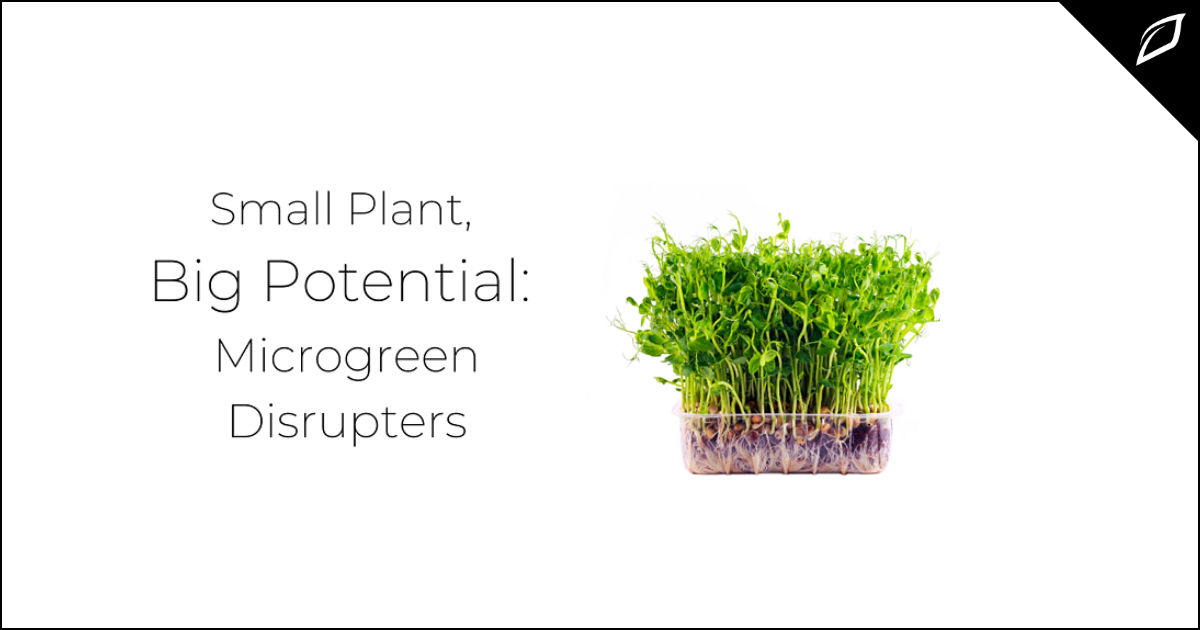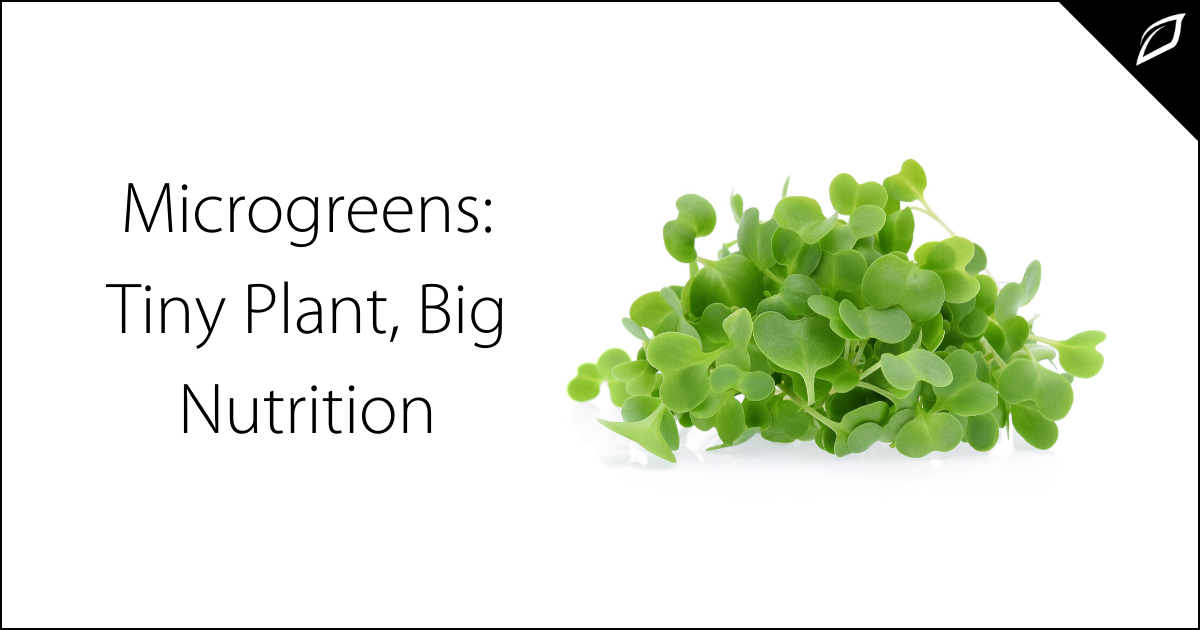Microgreens: Tiny Plant, Big Nutrition
Thanks to a resurgence in the popularity of microgreens, more and more people are growing these nutritionally potent plants for personal use, and...


Microgreens have been around for a long time, but they're enjoying a resurgence lately, thanks to some forward-thinking businesses, chefs and growers alike.
Sometimes called Micro-leaves, Microgreens are vegetable greens (not to be confused with sprouts or shoots) harvested just after the cotyledon leaves have developed. Cotyledon is a part of the embryo within the seed of the plant and produces the first leaves that appear from a germinating seed. Microgreens have fully developed after the cotyledon leaves have partially developed, and true leaves have started forming.
While their nutrient contents vary slightly, most varieties tend to be rich in antioxidants, potassium, iron, zinc, magnesium, and copper. They also pack a powerful burst of flavor for such a tiny plant.
Now that you know what microgreens are let's take a look at how they are disrupting the way we eat and grow our food. The "Farm to Table" movement has been trending for years in restaurants across the country. The philosophy of farm to table is a simple one, based on restaurants using locally grown, seasonal ingredients on their menus. But now, we see some restaurants create their own indoor microgreen garden ensuring fresh and locally sourced is undeniable.
But not every restaurant has the room or resources to take on a project like nurturing, maintaining, and harvesting microgreens. Still, there are plenty of commercial growers to supply local eateries.
Nate Dodson is the founder of Microgreens Farmer, where he not only grows microgreens, he's created an online class to teach others to do the same. "We started growing initially as a commercial operation, by adding microgreens to our urban farm. You don't need to start big or grow big to be a commercial seller." The success of Nate's online class is a clear indication that the microgreen revolution is here to stay. "Many of the students of my Microgreens Business online course grow and sell microgreens with a goal of $200-$300 extra per week to supplement their retirement income. That's pretty easy to do with just one farmer's market per week or servicing a couple of restaurants."
Because microgreens don't take up a lot of space and can be harvested within 7-10 days of planting, it's an excellent project for anyone with some spare time who's looking to supplement their income or their nutritional intake. Retirees, students, or business people looking to break free from a traditional 9-5, whatever your reason for researching microgreens is, there's a lot to love here.

Thanks to a resurgence in the popularity of microgreens, more and more people are growing these nutritionally potent plants for personal use, and...

Too much of anything can be a problem. Light is no exception, and a thoughtful grower needs to be strategic about the placement and strength of light...

Nutrient Burn – How to Detect Overfertilization and Nip it in the Bud One common problem that many indoor growers run into is the leaves of their...